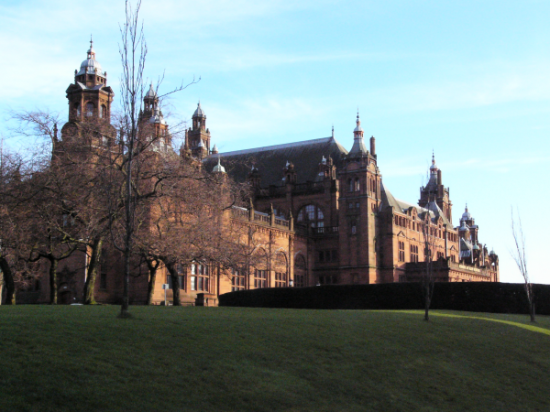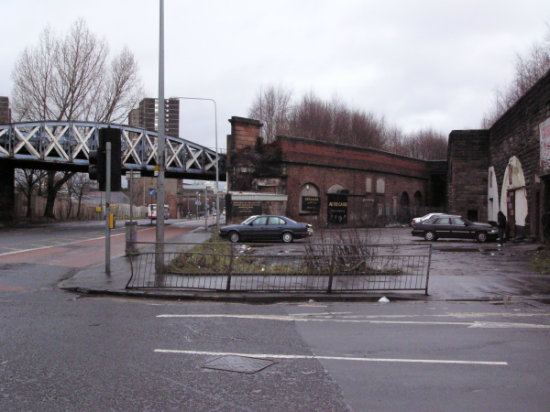GeographyJobs.co.ukGeography Jobs First. In the United Kingdom. |
 |
Job Seeker
My GeographyJobs Login
Featured Article
 Examining ‘Industrial Heritage’ of Industrial Cities
Examining ‘Industrial Heritage’ of Industrial Cities
By Brian Doucet
February 22, 2009
Today, a city like Detroit conjures up images of abandoned homes and factories, the sub prime mortgage crisis and a general sense of urban decay. It is not only the Motor City, nor is it only American places where these descriptions would be considered particularly apt. Northern England, southern Belgium, Germany’s Ruhr area and countless other areas all share similar problems and challenges with America’s so-called ‘rust belt’. They also share a similar urban landscape. This landscape is characterised not only by urban decay and abandonment, but by a remarkable quality and quantity of artistic and cultural institutions, as well as spectacular Nineteenth and early Twentieth century architecture. In order for us to fully understand why these cities are the way they are today, we first have to return to a time when they were the centres of their national (and in some ways global) economy.
Just as it is simple to cast these cities and regions aside today as part of the ‘rust belt’ it is equally easy to forget that, in the industrial era, these were the centre of growth, innovation, progress and prosperity. While today’s economy, centred on finance, services and innovate is driven from cities such as New York, London, Stuttgart or Amsterdam, their equivalents in the industrial era were more likely to be Cleveland, Manchester, Dortmund or Charleroi. These were the boomtowns of the industrial age, the places where people wanted to live. Detroit, after all, perfected the art of the mass production assembly line, which when developed, was state-of-the-art and revolutionary. These were the cities that attracted both the best and brightest to come and develop the new technology, and those seeking work in their factories and mills. It was this combination that helped to create wealth on a previously unimagined scale; something in great contrast to the boarded up homes which characterise many of these areas today.
The wealth created in these cities may have moved on as technology and society changed, but its evidence of their once-enjoyed stature is still present. It is evident in the built environment and in the arts and cultural institutions found in these cities. Cleveland has, for example, one of the best symphony orchestras in America, as well as one of its finest art galleries. Buffalo has the Albright Knox Gallery, as well as several Frank Lloyd Wright designed homes which were built for the city’s powerful industrial elite. Even much maligned Detroit is well endowed with artist and cultural institutions stemming from its heyday as the centre of the North American auto industry. And a quick walk around the downtown reveals an opulence in offices constructed in the first half of the Twentieth Century which was never repeated in subsequent generations (sadly, however, many of these buildings lay vacant today). In Britain the same trend is evident; from Liverpool’s docks to Glasgow’s Kelvingrove Art Gallery, remnants of this era when these were the centres of the industrial world are still evident. In the private sphere, this wealth is also evident. These cities feature small clusters of exclusive homes and residences, often situated both on a hill (to enjoy views and as a symbol of status), and in the western districts (to be upwind from the industrial factories). Some of these houses may no longer serve their original function – many former mansions have been divided and subdivided into smaller apartments – but their external grandness is a reminder of more prosperous days. As these were the wealthy cities of the industrial era, homes for captains of industry, offices and the arts received a level of opulence befitting this status. Much of this ‘industrial heritage’, and by that I mean the entire landscape of the industrial city, rather than simply old factories, is still with us today.
But our economies have moved on. If urban history teaches us anything it is that very few places are able to enjoy their economic, social and innovative prominence forever. The last few decades have brought about a profound shift away from traditional manufacturing and consequently, the places with the industrial investment (plants, infrastructure, people) have suffered most severely. Jobs left by their millions; the bright young innovators and entrepreneurs evolved to create wealth in sectors such as finance and services which developed in cities without the hefty industrial ‘baggage.’ Even the mass pools of labour moved to greener pastures resulting in not only deindustrialisation, but a net population decrease. This is reflected in the other side of the ‘industrial heritage’ left to us today: the all too familiar sites of vacant land, closed factories and urban decay that have become synonymous with so many of these places. It is not as if nothing has happened in the intervening years, but so far few cities have been able to find something to replace the industrial wealth lost. Some cities, Glasgow being a suitable example, look as if they are a mouth missing many teeth; you get a sense by walking around that there was much more here at an earlier stage in time. The old 19th and early 20th buildings are punctured by vacant lots; homes and factories demolished with neither no economic rationale for replacing them nor the population required to sustain them. The traditional urban fabric remains; roads, lights, sidewalks, even street signs are still present, yet where there should be homes and shops, there are only fields; where factories should hum, there is only silence. It is indeed an eerie feeling walking around such a neighbourhood – if one can use that term – when there is very little left of it. The impact on the urban landscape is one thing; the impact this has all had on the population that remains is just as grave.
This is the divided landscapes which reflects their chequered past. These are two extremes, of course, and it is not to say that old industrial cities do not have middle class areas, and ordinary run of the mill offices and shopping centres. They do. But it is this dualised ‘industrial heritage’, in all meaning of the word, which is the most striking feature of these cities. It is a heritage inherited from a time when they were the global centres of growth and innovation. Like all global cities, they were invariably polarised between rich and poor. While much of the wealth from old industrial cities is gone, the polarisation of their built environment remains.
Kelvingrove Glasgow and Vacant Lot Glasgow
The two sides of the ‘industrial heritage’ found in many cities are represented in these two photos. The wealth created when Glasgow was the second city of the British empire is represented today in edifices such as the Kelvingrove Art Gallery and Museum, which opened in 1901, during the height of the city’s prowess. The other side of this heritage, the subsequent deindustrialisation of cities such as Glasgow is represented in the vacant lots and abandoned railways found in the second image, of the city’s south side. (Both photos: January 2009, Brian Doucet)


